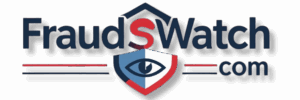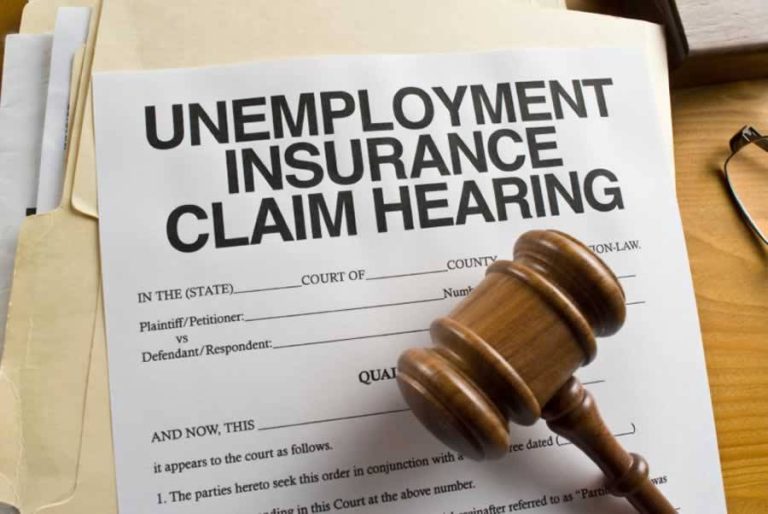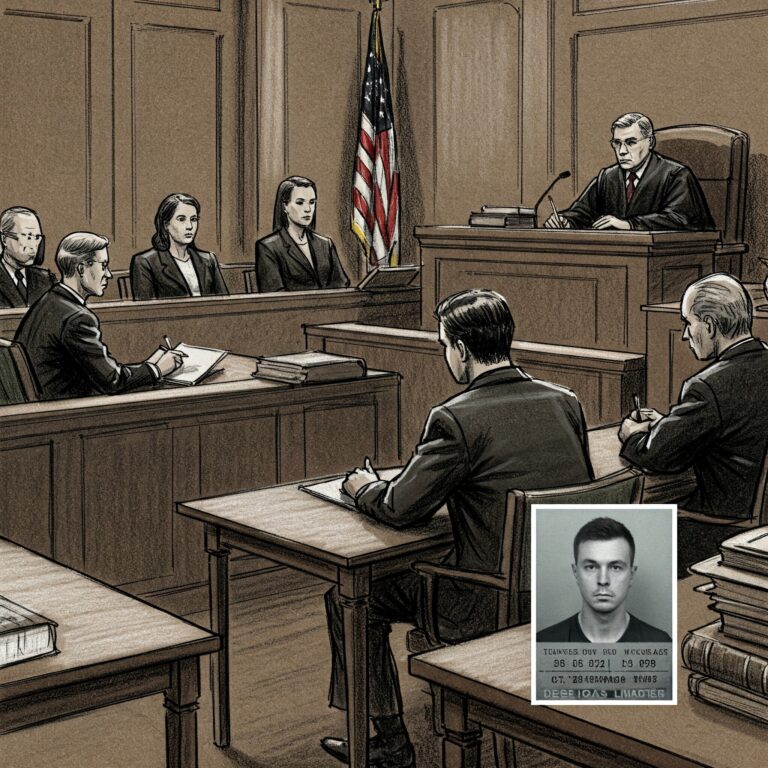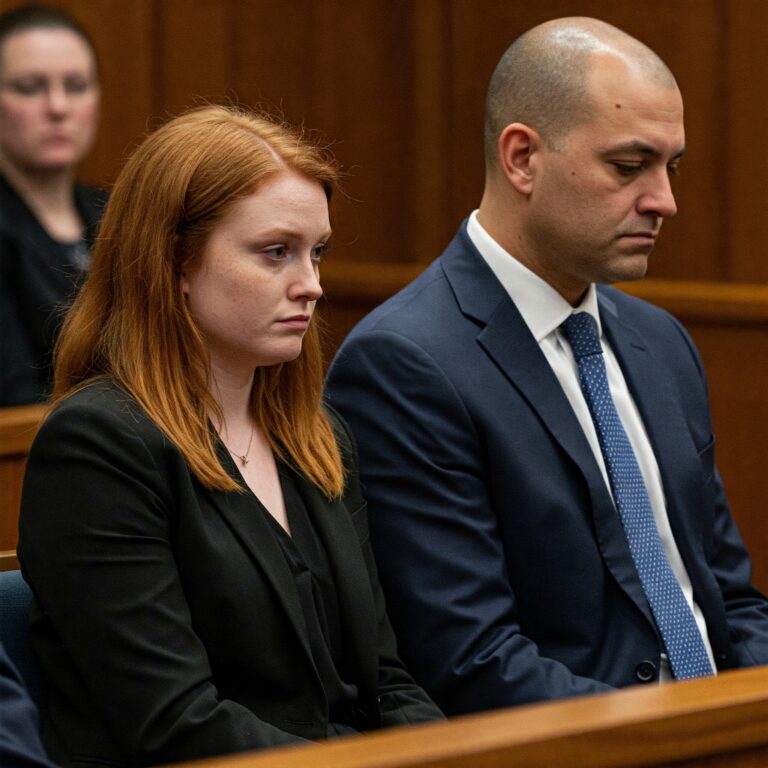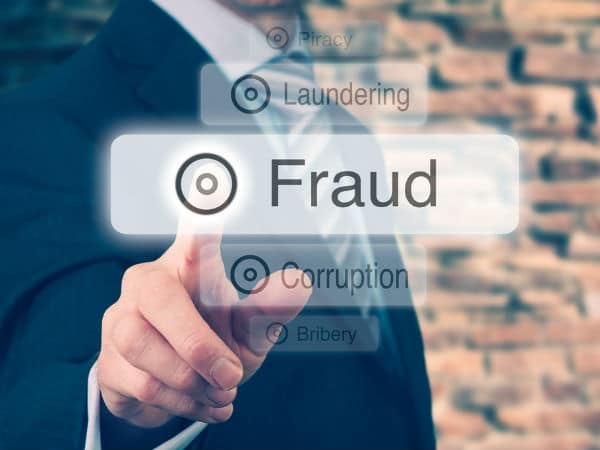Analysis of the Shanone Chatman-Ashley Healthcare Fraud Conviction: Exploitation of Telehealth and Durable Medical Equipment Schemes
Executive Summary
Shanone Chatman-Ashley, a 45-year-old licensed Nurse Practitioner (NP) from Opelousas, Louisiana, was recently convicted by a federal jury for orchestrating a significant healthcare fraud scheme targeting the Medicare program. Operating between 2017 and 2019, Chatman-Ashley exploited her position as an independent contractor for purported telehealth service companies to facilitate fraudulent claims exceeding $2 million. The core of the scheme involved ordering medically unnecessary Durable Medical Equipment (DME), such as knee braces and suspension sleeves, for Medicare beneficiaries whom she had never examined or assessed. To perpetuate the fraud, Chatman-Ashley systematically falsified documentation, certifying non-existent patient consultations and medical assessments. This illicit activity generated over 1,000 fraudulent DME orders, resulting in Medicare paying out more than $1 million in improper reimbursements. Evidence presented at trial established that Chatman-Ashley received illegal kickbacks and bribes from the telehealth companies in exchange for generating these orders. Following an investigation by the U.S. Department of Health and Human Services Office of Inspector General (HHS-OIG), Chatman-Ashley was convicted on five counts of health care fraud (18 U.S.C. § 1347) and faces a potential maximum penalty of 10 years in prison per count, with sentencing scheduled for July 31. This case underscores the vulnerabilities associated with telehealth platforms when exploited for fraudulent purposes, particularly in the context of DME ordering, and highlights the critical importance of maintaining genuine patient-provider relationships and robust program integrity measures. The conviction represents a significant outcome achieved through the coordinated efforts of HHS-OIG, the Department of Justice (DOJ) Criminal Division’s Fraud Section, and the U.S. Attorney’s Office for the Western District of Louisiana, operating under the broader framework of the national Health Care Fraud Strike Force Program.
The Anatomy of a Healthcare Fraud Scheme: USA v. Shanone Chatman-Ashley
A. Defendant Profile and Operational Context
The defendant, Shanone Chatman-Ashley, aged 45, is a resident of Opelousas, located in St. Landry Parish, Louisiana. Professionally, she held credentials as a licensed Nurse Practitioner (NP) within the state of Louisiana. In 2016, Chatman-Ashley sought and obtained enrollment as a Medicare provider, gaining the authority to treat Medicare beneficiaries and submit claims for reimbursement. A critical component of the Medicare enrollment process involves the provider certifying, via forms such as CMS Form 855B, their commitment to comply with all applicable Medicare laws, rules, and regulations. This includes an explicit attestation that the provider will not knowingly present, or cause to be presented, false or fraudulent claims for payment.
During the period relevant to the indictment, Chatman-Ashley operated not within a traditional clinical setting but as an independent contractor. She engaged with multiple entities, collectively referred to in court documents as “Telemedicine Companies” (specifically Company 1, Company 2, Company 3, and Company 4), which purported to offer telehealth services to Medicare beneficiaries. This operational structure placed her in a position to interact with patient data and generate medical orders facilitated through these third-party companies.
The foundation of this fraud scheme rested significantly on the exploitation of Chatman-Ashley’s legitimate professional credentials and her status as an enrolled Medicare provider. Her license and provider number granted her the necessary access and authority to sign medical orders that would be submitted for Medicare reimbursement. By obtaining Medicare enrollment, she implicitly agreed to adhere to program rules, including the prohibition against submitting false claims. The subsequent fraudulent activities represented a direct violation of these certifications and a profound abuse of the trust placed in her as a licensed medical professional and a participant in the Medicare program. This leveraging of legitimate status to perpetrate fraud from within the system underscores a persistent vulnerability in healthcare programs, where reliance on provider integrity is a key component of the claims process.
B. Modus Operandi: Exploitation of Telehealth for Unnecessary DME (2017-2019)
The fraudulent scheme orchestrated by Chatman-Ashley spanned approximately two years, commencing around July 2017 and continuing through August 2019. The central mechanism involved her collaboration with the aforementioned “Telemedicine Companies” to generate orders for DME. Specifically cited examples of the DME ordered include knee braces and suspension sleeves, among other items.
A defining characteristic of the fraud was the complete absence of legitimate medical assessment or patient interaction prior to the issuance of these DME orders. Evidence established that Chatman-Ashley routinely ordered these items for Medicare beneficiaries whom she had never personally examined. Furthermore, these beneficiaries had not undergone assessment by any other qualified medical provider in relation to the ordered equipment. The indictment elaborated that orders were frequently based merely on brief telephone conversations, and in some instances, with no conversation occurring at all between Chatman-Ashley and the beneficiary. This practice directly contravened fundamental medical standards requiring assessment and diagnosis before prescribing treatment or equipment.
The process often originated with telemarketing operations working in concert with the Telemedicine Companies. These entities would contact Medicare beneficiaries, often advertising “free” or low-cost medical items, and solicit personal information, including Medicare identification numbers and medical histories. This information was then used to generate the DME orders that Chatman-Ashley would subsequently sign. The blatant disregard for medical necessity was starkly illustrated by trial evidence showing Chatman-Ashley ordered a left knee brace for a beneficiary whose left leg had, in fact, been amputated. This instance exemplifies the mechanical, volume-driven nature of the fraud, detached from any genuine patient need.
Critically, Medicare program rules impose specific requirements for DME reimbursement, including the mandate that the equipment must be medically reasonable and necessary for the treatment of a diagnosed condition. For certain orthotics, such as the knee braces frequently ordered in this scheme, Medicare explicitly required an in-person examination by the ordering provider. Orders generated without such an examination, as was standard practice in Chatman-Ashley’s scheme, were therefore inherently non-compliant and ineligible for Medicare reimbursement.
While the scheme utilized platforms described as “telehealth services,” the fundamental failure was not the technology itself, but its misuse as a conduit to bypass essential medical protocols. The fraud was rooted in the absence of a legitimate patient-provider relationship, the circumvention of required examinations and medical necessity determinations, and the involvement of intermediary companies and marketers whose primary goal appeared to be generating billable orders rather than providing appropriate care. Telehealth served as the vector through which these pre-existing fraudulent methods—lack of examination, disregard for necessity, kickback-driven ordering—were executed at scale.
C. Falsification and Concealment Tactics
A crucial element of the scheme involved active measures taken by Chatman-Ashley to conceal the fraudulent nature of the DME orders and the resulting Medicare claims. Central to this concealment was the systematic falsification of documentation associated with the orders. Chatman-Ashley routinely signed medical records and order forms containing false certifications. These documents falsely attested that she had personally consulted with the Medicare beneficiaries for whom she was ordering DME. Furthermore, she falsely certified that she had conducted personal assessments of these beneficiaries to determine their medical need for the equipment being ordered.
These signed attestations were directly contradicted by the evidence presented at trial, which established the lack of such consultations and assessments. The indictment explicitly stated that the purpose of these false certifications was multifaceted: to unlawfully enrich herself, to cause the submission of false claims, and importantly, to conceal both the fraudulent nature of the claims and her solicitation and receipt of illegal kickbacks and bribes.
The effectiveness of this concealment strategy hinges on the operational realities of healthcare payment systems like Medicare. These systems rely heavily on the accuracy and truthfulness of provider documentation and attestations to verify the legitimacy and medical necessity of claims. Signed orders and supporting documentation from licensed providers are often taken at face value, particularly in high-volume claims processing environments. By falsifying these critical documents, Chatman-Ashley created a veneer of legitimacy for orders that were, in reality, entirely baseless. This allowed the fraudulent claims generated by the Telemedicine Companies to proceed through the billing process, appearing compliant when they were not. This reliance on provider attestation represents a significant vulnerability; when providers intentionally falsify records, as Chatman-Ashley did, they can effectively subvert standard controls and facilitate large-scale fraud. The integrity of the claims payment system is thus deeply dependent on the ethical conduct and honesty of participating providers in their documentation practices.
D. Financial Quantification: Fraudulent Billings, Reimbursements, and Kickbacks
The healthcare fraud scheme orchestrated by Shanone Chatman-Ashley resulted in substantial financial losses to the Medicare program and significant illicit gains facilitated by illegal payments. Over the course of the scheme, from approximately July 2017 to August 2019, Chatman-Ashley signed a remarkable volume of fraudulent orders—more than 1,000—for medically unnecessary DME.
These fraudulent orders served as the basis for claims submitted to Medicare by various DME suppliers, often coordinated through the Telemedicine Companies Chatman-Ashley contracted with. The aggregate value of these false and fraudulent claims submitted to Medicare exceeded $2 million. As a direct result of these improper submissions, the Medicare program disbursed reimbursements totaling over $1 million, representing a significant actual loss to the federal health care program and, ultimately, to taxpayers.
A key motivating factor behind Chatman-Ashley’s participation in this extensive fraud was direct financial remuneration in the form of illegal kickbacks and bribes. Evidence established that she received these payments from the Telemedicine Companies specifically in exchange for generating the high volume of medically unnecessary DME orders. The indictment explicitly identified the purpose of the scheme as the unlawful enrichment of Chatman-Ashley through these kickbacks and the subsequent fraudulent Medicare billings they enabled.
Table 1: Financial Summary of Chatman-Ashley Fraud Scheme
| Metric | Value | Timeframe | Source Snippets |
|---|---|---|---|
| Fraudulent Claims Submitted | > $2,000,000 | 2017-2019 | |
| Medicare Reimbursements Paid | > $1,000,000 | 2017-2019 | |
| Number of Fraudulent DME Orders | > 1,000 | 2017-2019 | |
| Compensation Method | Kickbacks & Bribes | 2017-2019 |
The presence of kickbacks is a critical element in understanding the dynamics of this fraud. Such payments create a direct financial incentive for medical providers to prioritize personal gain over sound medical judgment and patient welfare. As articulated by HHS-OIG officials in response to this case and in broader fraud alerts, illegal kickbacks fundamentally undermine and corrupt the medical decision-making process. By accepting payments tied to the volume of orders generated, Chatman-Ashley had a clear motive to approve DME requests regardless of medical necessity, facilitating the large-scale submission of fraudulent claims. This aligns precisely with HHS-OIG’s consistent warnings about how financial inducements can sever the link between a provider’s actions and the best interests of their patients, ultimately harming both the patient and the integrity of federal healthcare programs. The kickbacks served as the engine driving the scheme’s volume and profitability for the involved parties.
Investigation, Prosecution, and Conviction
A. Lead Investigating and Prosecuting Agencies
The investigation into Shanone Chatman-Ashley’s fraudulent activities was conducted by the U.S. Department of Health and Human Services Office of Inspector General (HHS-OIG). HHS-OIG is the primary federal agency tasked with combating waste, fraud, and abuse within HHS programs, including Medicare and Medicaid.
Following the investigation, the prosecution of the case was handled collaboratively by two key components of the U.S. Department of Justice (DOJ). The DOJ Criminal Division’s Fraud Section played a central role, represented by Trial Attorney Kelly Z. Walters. The Fraud Section, particularly its Health Care Fraud Unit, comprises specialized prosecutors focusing on complex healthcare fraud matters nationwide, often employing advanced data analytics and operating through the Health Care Fraud Strike Force model. They were joined by the U.S. Attorney’s Office for the Western District of Louisiana (WDLA), represented by Assistant U.S. Attorney (AUSA) Danny Siefker, bringing local jurisdiction and resources to the prosecution effort. The indictment against Chatman-Ashley was formally filed in the Western District of Louisiana in December 2023.
The involvement of these specific entities highlights the coordinated, multi-agency approach typically employed in significant healthcare fraud enforcement actions. HHS-OIG leverages its investigative expertise specific to healthcare programs, while the DOJ’s specialized Fraud Section provides national-level prosecutorial resources and experience in complex fraud litigation, working in tandem with the local U.S. Attorney’s Office responsible for the district where the crimes occurred or the defendant resides. This structure reflects the operational framework of the Health Care Fraud Strike Force Program, designed to combine federal expertise with local presence for maximum effectiveness. The Centers for Medicare & Medicaid Services (CMS) also plays a related role, working with HHS-OIG to take administrative actions against providers involved in fraud, such as payment suspensions or exclusion from program participation.
Table 2: Key Government Agencies and Roles in USA v. Chatman-Ashley
| Agency | Role in Case | Key Personnel/Unit Mentioned | Source Snippets |
|---|---|---|---|
| HHS-OIG | Investigation | SAC Jason E. Meadows | |
| DOJ Criminal Division, Fraud Section | Prosecution | Trial Attorney Kelly Z. Walters, Head Matthew R. Galeotti | |
| U.S. Attorney’s Office (WDLA) | Prosecution | AUSA Danny Siefker, U.S. Attorney Alexander C. Van Hook | |
| CMS | Provider Accountability / Program Integrity | N/A (General Role) |
B. Legal Charges and Jury Verdict
Shanone Chatman-Ashley was formally charged via an indictment filed in December 2023. The indictment contained five distinct counts of health care fraud, alleging violations of Title 18, United States Code, Section 1347 (Health Care Fraud) and Section 2 (Aiding and Abetting). The case proceeded to trial before U.S. District Judge David C. Joseph in the federal courthouse in Lafayette, Louisiana.
After a four-day trial where prosecutors presented court documents and other evidence detailing the scheme, the federal jury returned a verdict finding Chatman-Ashley guilty on all five counts of health care fraud. The conviction indicates the jury found the evidence presented sufficiently compelling to establish beyond a reasonable doubt her knowing participation in the scheme to defraud Medicare through the submission of false claims for medically unnecessary DME, facilitated by falsified documentation and motivated by kickbacks.
C. Sentencing Outlook
Following the jury’s guilty verdict, Shanone Chatman-Ashley’s sentencing hearing has been scheduled for July 31. The statutory maximum penalty for each count of health care fraud under 18 U.S.C. § 1347 is 10 years in prison. As she was convicted on five counts, she faces a potential maximum sentence of up to 50 years of imprisonment.
However, the actual sentence imposed will be determined by the presiding federal judge. The judge is required to consider several factors, including the advisory U.S. Sentencing Guidelines, which provide a recommended sentencing range based on the specifics of the offense (such as the amount of financial loss and the defendant’s role) and the defendant’s criminal history. Other statutory factors outlined in 18 U.S.C. § 3553(a), such as the nature and circumstances of the offense, the need for the sentence to reflect the seriousness of the crime, promote respect for the law, provide just punishment, afford adequate deterrence, and protect the public, will also be weighed.
The substantial potential prison sentence underscores the severity with which the federal legal system regards large-scale healthcare fraud. Schemes like Chatman-Ashley’s, involving millions of dollars in fraudulent claims, a significant breach of professional trust, and the exploitation of vulnerable beneficiaries, are viewed as serious felonies. The potential for a lengthy sentence serves not only as punishment for the individual defendant but also as a potent deterrent signal to other healthcare professionals who might contemplate engaging in similar illicit activities. The final sentence will reflect the judicial assessment of these factors in the context of this specific case.
Government Response and Official Statements
The conviction of Shanone Chatman-Ashley elicited strong statements from key officials representing the government agencies involved in the investigation and prosecution, reflecting a unified stance against healthcare fraud.
A. Department of Justice Criminal Division Perspective
Matthew R. Galeotti, serving as the Head of the Justice Department’s Criminal Division, issued a statement condemning Chatman-Ashley’s actions. He characterized the conduct as “brazenly cheating Medicare out of its limited resources”. Galeotti emphasized the broader negative impacts of such fraud, noting that “Dishonest medical practitioners put significant strain on our health care system and reduce the quality of patient care”. He firmly stated the DOJ’s position: “The Department of Justice will not tolerate medical professionals who fraudulently enrich themselves at the expense of American taxpayers”. His remarks concluded by thanking the prosecutors and law enforcement partners for their work and reaffirming the commitment to holding such individuals accountable.
B. U.S. Attorney (WDLA) Perspective on Ethical Breach and Victim Impact
Alexander C. Van Hook, the U.S. Attorney for the Western District of Louisiana where the trial occurred, focused on the ethical dimensions of the crime and its impact on beneficiaries. He asserted that Chatman-Ashley “not only defrauded the Medicare Program but went against everything the medical profession stands for, which is a promise to provide ethical and responsible patient care”. Van Hook highlighted the specific vulnerability of the victims, stating, “She took advantage of beneficiaries who were elderly and handicapped to order items for them that were not medically necessary”. Echoing the DOJ’s commitment, he affirmed his office’s dedication to collaborating with federal partners to combat healthcare fraud within the Western District of Louisiana.
C. HHS-OIG Perspective on Kickbacks and Program Integrity
Jason E. Meadows, Special Agent in Charge (SAC) of the HHS-OIG office responsible for the investigation, addressed the corrupting influence of the financial incentives driving the scheme. “Illegal kickback payments undermine and corrupt the medical decision-making process,” stated SAC Meadows. He explained the perverse dynamic where “Both the payer and recipient of kickbacks benefit from these schemes, but it’s ultimately the taxpayers who foot the bill”. He concluded by assuring continued collaboration between HHS-OIG and law enforcement partners “to protect the Medicare trust fund that millions of Americans depend on”.
Collectively, these statements from the DOJ Criminal Division leadership, the local U.S. Attorney, and the lead investigating agency (HHS-OIG) deliver a consistent and forceful message. They unequivocally condemn the fraudulent actions, emphasize the violation of professional ethics, highlight the tangible harm caused to vulnerable patients and the financial burden on taxpayers, and strongly reaffirm a unified, collaborative commitment to vigorous investigation and prosecution. This coordinated messaging serves to amplify the deterrent effect of the conviction, signaling to the healthcare community the serious consequences of engaging in fraud against federal healthcare programs.
Broader Implications and Enforcement Landscape
The conviction of Shanone Chatman-Ashley is not an isolated event but rather occurs within a broader context of federal efforts to combat healthcare fraud and address emerging vulnerabilities, particularly those related to telehealth and DME.
A. The Health Care Fraud Strike Force Program Context
The prosecution team in this case included attorneys from the DOJ Criminal Division’s Fraud Section, the entity that leads the national Health Care Fraud Strike Force Program. This program, initiated in March 2007, represents a significant strategic effort by the federal government to combat healthcare fraud through targeted, coordinated enforcement. The Strike Force model is characterized by its interagency approach, bringing together the resources and expertise of various federal and state entities, including the DOJ (both the Fraud Section and U.S. Attorneys’ Offices), HHS-OIG, the Federal Bureau of Investigation (FBI), the Drug Enforcement Administration (DEA), CMS, and state Medicaid Fraud Control Units.
A key feature of the Strike Force model is its use of advanced data analytics to identify geographic “hot spots” with high levels of suspicious billing activity and to detect aberrant patterns indicative of fraud. This data-driven approach allows for proactive targeting of the most egregious offenders and newly emerging fraudulent schemes, supplementing traditional investigative techniques. Initially launched in South Florida, the program’s success led to its expansion across the country. Strike Forces now operate in numerous regions, including the Gulf Coast area encompassing parts of Louisiana, as well as major hubs like Miami, Los Angeles, Houston, Detroit, and Brooklyn.
The impact of the Strike Force program has been substantial. As of recent reporting, the program has charged over 5,400 defendants allegedly responsible for collectively billing federal health care programs and private insurers more than $27 billion. Recent large-scale enforcement actions coordinated through the Strike Force program have specifically targeted fraud schemes involving telemedicine, DME, laboratory testing, substance abuse treatment facilities (“sober homes”), and the illegal distribution of opioids – demonstrating that the type of fraud perpetrated by Chatman-Ashley aligns with major national enforcement priorities. The Chatman-Ashley case thus exemplifies the kind of sophisticated, high-dollar fraud that the Strike Force program is designed to detect and prosecute. The program’s emphasis on data analytics is particularly relevant in identifying outliers and patterns associated with evolving schemes like those exploiting telehealth platforms, enabling a more proactive stance against fraud compared to purely reactive investigations based on complaints.
Table 3: Overview of Health Care Fraud Strike Force Program
| Feature | Description | Relevance/Example | Source Snippets |
|---|---|---|---|
| Inception Year | March 2007 | Established history of focused enforcement | |
| Lead Agencies | DOJ (Fraud Section, USAOs), HHS-OIG, FBI, CMS, DEA, State/Local LE | Multi-agency collaboration model used in Chatman-Ashley case | |
| Model | Interagency teams, advanced data analytics, focus on “hot spots” & worst offenders | Proactive identification and targeting of schemes | |
| Operating Locations | Multiple Strike Forces covering various districts, including Gulf Coast (LA) | Geographic reach covering areas like WDLA | |
| Key Statistics (Approx.) | >5,400 Defendants Charged; >$27 Billion Billed | Demonstrates scale and impact of the program | |
| Notable Case Types | DME Fraud, Telemedicine Fraud, Opioid Distribution, Lab Testing Fraud, Sober Home Fraud | Aligns with Chatman-Ashley scheme and other major enforcement actions |
B. CMS Role in Combating Fraud and Ensuring Provider Accountability
Beyond the investigative and prosecutorial functions of HHS-OIG and DOJ, the Centers for Medicare & Medicaid Services (CMS) plays a critical, complementary role in protecting federal healthcare programs. CMS works closely with HHS-OIG and takes administrative actions against providers implicated in fraud, waste, or abuse. These actions can include suspending Medicare payments to providers when credible allegations of fraud arise, often based on referrals from OIG, thereby immediately stemming financial losses. Following convictions or other determinations, CMS has the authority to exclude providers like Chatman-Ashley from participation in Medicare, Medicaid, and other federal healthcare programs, preventing them from billing these programs in the future.
CMS also engages in broader program integrity efforts. This includes developing and refining policies to prevent fraud, implementing safeguards specifically targeting high-risk areas like DMEPOS (Durable Medical Equipment, Prosthetics, Orthotics, and Supplies) and telehealth services, conducting monitoring and audits of billing patterns, and educating providers on proper billing practices and compliance requirements. These administrative and preventative measures complement the criminal and civil enforcement actions pursued by DOJ and OIG. This multi-pronged approach ensures that healthcare fraud is addressed through various channels – criminal prosecution leading to potential imprisonment and fines, and administrative actions leading to program exclusion, payment suspension, and financial recoupment. Together, these efforts aim to punish wrongdoers, protect beneficiaries, and safeguard the financial viability of Medicare and Medicaid.
C. Telehealth Vulnerabilities Exposed: DME Ordering and Oversight Gaps
The USA v. Chatman-Ashley case serves as a stark illustration of how telehealth modalities, while offering significant benefits in access and convenience, can be exploited for fraudulent purposes, particularly in the context of ordering high-cost items like DME. The scheme thrived on the absence of direct, in-person patient examinations, allowing orders to be generated based on minimal or non-existent interaction, often facilitated by intermediary telehealth companies and aggressive telemarketing operations that recruited beneficiaries.
HHS-OIG has been acutely aware of these vulnerabilities. In July 2022, the agency issued a Special Fraud Alert specifically cautioning medical practitioners about entering into arrangements with certain purported telemedicine companies. The alert detailed several “suspect characteristics” often associated with fraudulent schemes, many of which mirror the facts of the Chatman-Ashley case:
- Patients being identified or recruited by the telemedicine company or its agents (e.g., telemarketers, call centers) through methods like advertising “free” items.
- Practitioners being paid based on the volume of orders or prescriptions generated, often involving kickbacks.
- Practitioners having limited or no direct interaction with the beneficiaries before ordering items or services.
- The telemedicine company primarily offering or arranging for only one type of product or service, effectively predetermining the practitioner’s treatment plan.
The rapid expansion of telehealth utilization, particularly spurred by flexibilities introduced during the COVID-19 public health emergency, further heightened concerns about program integrity risks. While critical for maintaining access to care, this expansion also created new opportunities for fraudulent actors. OIG investigations have uncovered numerous schemes where companies purporting to provide telehealth services paid providers kickbacks to order medically unnecessary DME, genetic testing, or medications, often based on information solicited from beneficiaries by telemarketers.
Recognizing these risks, OIG has conducted audits and issued recommendations to CMS aimed at strengthening oversight. For instance, a review of Medicare telehealth billing during the pandemic’s first year identified over 1,700 providers whose billing patterns posed a high risk, suggesting the need for enhanced monitoring and targeted oversight. OIG has also recommended improved transparency in identifying telehealth companies involved in billing Medicare and further provider education on appropriate telehealth billing. Ongoing OIG work specifically examines fraud safeguards related to DMEPOS. The Chatman-Ashley case underscores the necessity of these ongoing efforts to adapt oversight mechanisms to the evolving landscape of healthcare delivery, ensuring that telehealth’s potential is realized without compromising program integrity.
The proliferation of such fraudulent schemes also imposes a significant compliance burden on legitimate healthcare providers. Ethical practitioners seeking to utilize telehealth must exercise heightened scrutiny and due diligence when partnering with third-party platforms or marketing organizations to avoid inadvertently becoming entangled in fraudulent arrangements. OIG’s warnings emphasize the need for providers to carefully evaluate the legitimacy and compliance of any proposed telehealth arrangement before participating.
Table 4: Identified Telehealth/DME Fraud Vulnerabilities and OIG/CMS Responses
| Vulnerability/Risk Area | Description | Example from Chatman-Ashley or General Schemes | OIG/CMS Action/Recommendation | Source Snippets |
|---|---|---|---|---|
| Lack of Patient Exam/Relationship | Providers ordering items without seeing/assessing patient | Chatman-Ashley ordered DME based on brief/no calls, no exams | Requirement for genuine relationship/exam stressed; Medicare rules require in-person exam | |
| Kickbacks to Providers | Providers paid per order/prescription, incentivizing volume over necessity | Chatman-Ashley received kickbacks from Telemedicine Companies | OIG Fraud Alerts warn against kickbacks; AKS prohibits | |
| Role of Telemedicine Companies/Marketers | Intermediaries recruit patients, generate leads, facilitate orders, often pressure providers | Chatman-Ashley worked for such companies; patients solicited via telemarketing | OIG Fraud Alert flags suspect company characteristics; need for provider caution | |
| Medically Unnecessary Orders (DME) | Items ordered without valid medical reason or documentation | >1,000 unnecessary DME orders by Chatman-Ashley (e.g., brace for amputated leg) | CMS program integrity edits; OIG audits; provider education | |
| Falsified Documentation | Providers falsely certifying exams, necessity, or consultations | Chatman-Ashley signed false certifications | Prosecutions; audits rely on documentation review | |
| High-Risk Billing Patterns | Providers/practices with unusual volume, coding, or service types | OIG identified 1,714 high-risk telehealth providers post-COVID | OIG recommends enhanced monitoring, targeted oversight by CMS | |
| Regulatory Loopholes/Oversight Gaps | Exploiting expanded telehealth flexibilities; lack of systematic ID of telehealth companies | Post-COVID expansion raised concerns; OIG notes lack of company ID in data | OIG recommendations to CMS for transparency, safeguards |
D. The Critical Role of Legitimate Patient-Provider Relationships
Fundamentally, the Chatman-Ashley fraud highlights the indispensable nature of a genuine patient-provider relationship and the necessity of thorough medical assessment prior to any treatment or prescription, including DME. Medical ethics, professional standards of care, and specific Medicare regulations (like the in-person exam requirement for certain orthotics) all presuppose this foundation. The scheme operated precisely by severing this link – replacing assessment with automated ordering, and relationship with transactional exchanges driven by kickbacks.
Legitimate telehealth, in contrast, uses technology to facilitate care within an established relationship or incorporates robust protocols to ensure adequate assessment occurs remotely. It does not eliminate the need for medical judgment and adherence to standards of care. Maintaining the integrity of the patient-provider encounter, whether in-person or virtual, remains the cornerstone of preventing fraud and ensuring appropriate care delivery. Technology is a tool; its proper use depends on upholding these core principles.
E. Impact on Medicare Solvency, Taxpayers, and Beneficiary Welfare
Healthcare fraud of the scale seen in the Chatman-Ashley case has far-reaching consequences beyond the immediate financial loss. The diversion of over $1 million from the Medicare Trust Fund contributes to the financial strain on the program, potentially impacting its long-term solvency. The Medicare Part A (Hospital Insurance) Trust Fund, for instance, faces projections of depletion in the coming years, making the prevention of fraud and improper payments crucial.
Ultimately, taxpayers bear the cost of these losses, whether through increased taxes, higher Medicare premiums and deductibles, or potential reductions in program benefits or services. The statement from HHS-OIG SAC Meadows explicitly noted that while perpetrators benefit, “it’s ultimately the taxpayers who foot the bill”.
Moreover, the impact on Medicare beneficiaries can be direct and harmful. As highlighted by U.S. Attorney Van Hook, this scheme specifically targeted and exploited elderly and handicapped individuals. Beneficiaries may receive DME that is medically unnecessary, ill-fitting, or potentially even harmful. Their personal information and Medicare numbers, solicited by telemarketers or misused by providers, are compromised, exposing them to medical identity theft. Fraudulent claims filed against their Medicare number can lead to the exhaustion of benefits for certain items or services, potentially resulting in the denial of coverage when they genuinely need care later. Receiving unnecessary items can also lead to confusion and distress. Beyond the tangible harms, such schemes erode the trust beneficiaries place in medical professionals and the healthcare system itself. While the direct financial loss of over $1 million is substantial, these less quantifiable costs—the potential harm to patients, the violation of trust, the compromise of personal data, and the administrative burden on beneficiaries to detect and report fraud on their statements—represent significant collateral damage stemming from such illicit activities.
Conclusion: Lessons Learned and Future Considerations
The federal conviction of Louisiana Nurse Practitioner Shanone Chatman-Ashley marks a significant victory in the ongoing fight against healthcare fraud. This case provides a clear example of how licensed medical professionals can exploit their positions of trust, leveraging the efficiencies of telehealth platforms not for patient benefit, but to execute large-scale fraud schemes targeting federal healthcare programs. The scheme’s core elements—ordering medically unnecessary DME without patient examination, systematic falsification of records, and the corrupting influence of illegal kickbacks—resulted in over $2 million in fraudulent Medicare claims and more than $1 million in actual losses.
The successful outcome underscores the effectiveness of the government’s coordinated, multi-agency approach. The meticulous investigation by HHS-OIG, coupled with the specialized prosecution resources of the DOJ Criminal Division’s Fraud Section and the local U.S. Attorney’s Office, operating within the Health Care Fraud Strike Force framework, proved essential in dismantling this scheme and holding the perpetrator accountable. The potential for a substantial prison sentence sends an unambiguous deterrent message to the healthcare community regarding the severe consequences of defrauding Medicare and betraying patient trust.
This case also serves as a critical reminder of the vulnerabilities inherent in evolving healthcare delivery models. While telehealth offers immense potential, its rapid expansion necessitates commensurate vigilance and robust oversight to prevent abuse. The Chatman-Ashley scheme highlights specific risks associated with remote DME ordering when detached from genuine patient assessment and driven by illicit financial incentives. Ongoing efforts by CMS and HHS-OIG to enhance program integrity safeguards, refine monitoring techniques (including data analytics), issue guidance (like OIG’s Special Fraud Alerts), and educate providers are crucial.
Ultimately, protecting the integrity of Medicare and ensuring patient safety requires a collective effort. Providers must adhere to the highest ethical standards, prioritize patient welfare over financial gain, and exercise due diligence when engaging with third-party service providers. Payers like CMS must continue to adapt and strengthen oversight mechanisms. Beneficiaries play a role by safeguarding their Medicare information and reviewing their Medicare Summary Notices for suspicious activity. Vigilance, robust compliance programs, the maintenance of legitimate patient-provider relationships, and the swift reporting of suspected fraud through established channels (such as the HHS-OIG and DOJ hotlines ) are paramount as technology continues to reshape the healthcare landscape. Ethical conduct and genuine patient care must remain the bedrock of the system, irrespective of the modality through which care is delivered. Sources used in the report
